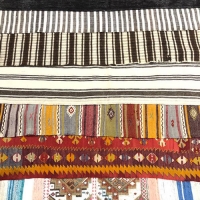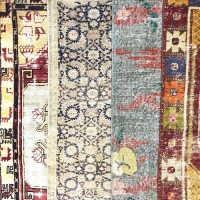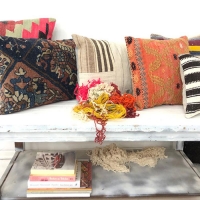
Social Spirit in Rug Weaving
It is possible to see socio-economic and socio-cultural structure, belief, love, system and fight of societies in hand woven rugs and carpets in history. It is also possible to read the mood of societies from the colors, motifs, raw materials, warps, scarves and stitches of rugs and carpets. That is to say, with all these features, rugs and carpets that express a society have been the mirror of society for centuries.
In the history, the people's sweat, hand labor, the eye, the imagination, as a result of the whole life of the rugs has come to exhibit. The motifs in rug weaving, thousands of years of time, tens of thousands of kilometers of geography differences; It is noteworthy that despite the alienities of the cultural circles, there is a solid and regular development. Stamps seen in the flag, pennant, structure, tombstone and balball of the height and lineages in history were included in the textiles as motifs. These signs, known as image in history, have become a social symbol of the tribes. They continued their existence throughout the entire period, wherever they went and spread. Even if they are remembered with different languages, accents and names, they have not lost their shapes and techniques. The rugs and carpets weaving revealed this fact. In the past, rugs and carpets have been woven both to meet the needs and as a tradition. The rugs and carpets that they spread to the tent and house in societies and laid on the doorway, hanged or stretched on its door for the purpose of ornamentation, have even been the subject of epics.
The rugs were placed on the edges of the tent in the period when they first appeared. Such weavings have been used for many years as a daily use item. On the other hand, it has been a tradition for newlywed people to weave carpets and flat weaving to prepare a dowry, to donate a rug prepared in health and to donate to a religious or social institution. For example, in Anatolia, until recently, every young girl had to know about weaving carpets or plain weaving. This tradition has now disappeared in cities, but it is seen that the villages still continue. For this reason, plain weaving has been woven for need or dowry, rather than selling waders. The material of all these fabrics is wool. Wool was obtained from the sheep fed by the people. Spinning has been turned into yarn with spindle and spinning wheel. In addition, cotton and silk were also used. It is dyed with dyes from natural ingredients and plants.



